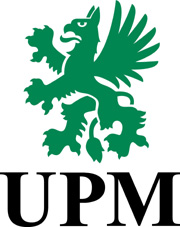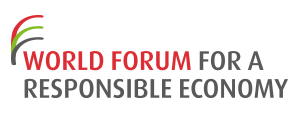UPM, the Biofore Company, leads forest industries into a new, sustainable and innovation-driven future. All its products are made of renewable raw materials and are recyclable. UPM consists of three Business Groups: Energy and pulp, Paper, and Engineered materials. The Group has production plants in 15 countries and UPM owns forests in Finland, UK, USA and Uruguay, altogether nearly 1.3 million hectares. In addition UPM sources raw material from much bigger area owned by a variety of forest owners from big institutional owners to small non-industrial private forest owners. Although biodiversity has been the main environmental driver for UPM since 1990’s, UPM wanted to emphasize its significance. Therefore the UPM Global Biodiversity Program was launched in2008.
UPM Global Biodiversity Program gives life to forests
4. Environment
Biodiversity and sustainable resource management



Context
Objectives
- To maintain and enhance biodiversity on UPM forest lands,
- To promote sustainable forestry practices in all wood sourcing operations
APPROACH
The Program identified six key elements of forest biodiversity:
1/ Maintain and increase proportion of native tree species because they have an important role in the functioning of forest ecosystems (providing habitat, shelter and food for many species).
2/ Manage deadwood quality and quantity to enhance biodiversity, particularly for insects, especially beetles, fungi and lichens, but also birds, bats and mammals. They are also releasing nutrients back into the soil where they can help living trees and other vegetation to grow.
3/ Protect valuable habitats: even if they are often naturally small, they provide the richest and most varied components for biodiversity.
4/ Manage variation in forest structure: Different species require variety in the distribution of trees either vertically or horizontally in a stand or across the forest.
5/ Maintain open water bodies and wetlands. Rivers and lakes provide a wide range of habitats for fish, many different mammal, plant, bird and insect species. Water resources provide us with fresh water, important for drinking water, agriculture and industry.
6/ Implement plans for remnants of natural forests so that they can evolve through natural disturbances like fire, wind, snow and ice, insects and disease. In addition to promoting biodiversity they are needed for research and education.
A global target has been set for each of the elements and the implementation is done through country level targets and local action plans, such as creating habitat for fire dependent species in Finland; Tracing the origin of Russian wood; Promoting biodiversity in the wood supply chain in Germany; Restoring the endangered Black Grouse populations in Great Britain; Conserving Uruguayan Palm Savannas (a native species protected by Law); or signing a conservation easement in USA for the 76 000 hectares UPM manage in Northern Minnesota.
CONTRIBUTION TO COMPANY PERFORMANCE
- A company image that reflects a strong commitment towards biodiversity and sustainable development.
- Higher proportion of broadleaved trees in coniferous forests result in higher quality of wood.
- The implementation strengthened stakeholder engagement and built trust to UPM among various interest groups.
Benefits
- All the key elements of the program were enhanced globally covering not only forests but other biotopes, too. - Species diversity is higher in all countries.
- Workforce
- 20 414 salariés (2014)
- Turnover
- 8.9 milliards US$ (2014)
- Country
- Finland
Contact
Mr. Petri Heinonen Environment Manager, Forestry ( This email address is being protected from spambots. You need JavaScript enabled to view it.)

